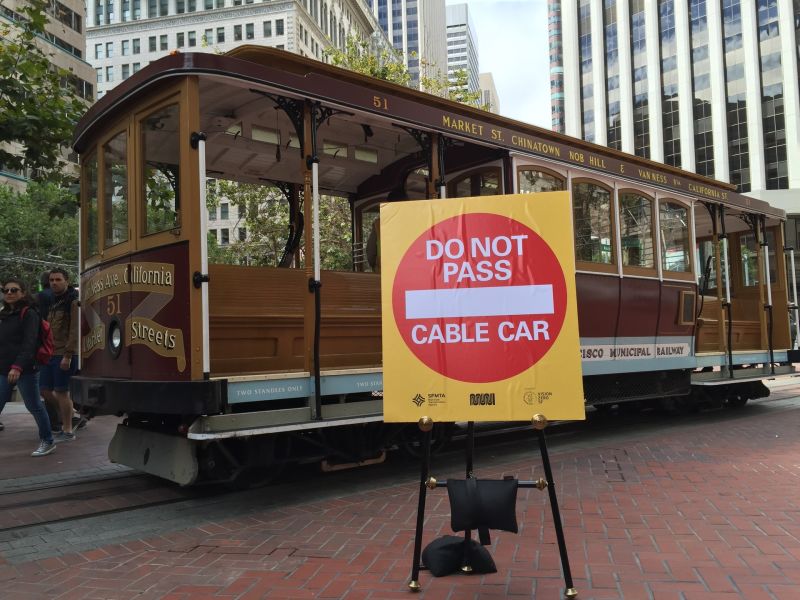Being a conductor on San Francisco's cable cars is physically demanding, but it shouldn't be so dangerous, city authorities said Tuesday as they announced a plan to keep operators of the iconic vehicles safer as they contend with traffic.
The change comes two months after cable car operator Reynaldo Morante was hit by a motorcycle rider who faces drunken driving charges and four months after operator Santiago Montoya was hit by a car. Both vehicles were passing the cable cars illegally when they hit the operators, police said.
The San Francisco Municipal Transportation Agency and police unveiled several safety improvements, including large "Do Not Pass" signs on the backs of cable cars, hand-held stop signs for operators who often try to slow or stop traffic for off-boarding passengers and stepped-up traffic enforcement courtesy.
"Unfortunately, change only comes by the way of human sacrifice," said Eric Williams, a former cable car operator and president of Transport Workers Union Local 250-A. "This is not a joke."
Williams said Montoya just finished his first stretch of physical rehabilitation and "his life will never be the same." Morante, who was not expected to survive, is "fighting for his life," Williams said, declining to go into further details about the operator's injuries per their families' wishes.
